Brand Monitoring: How to Track and Protect Your Reputation Online
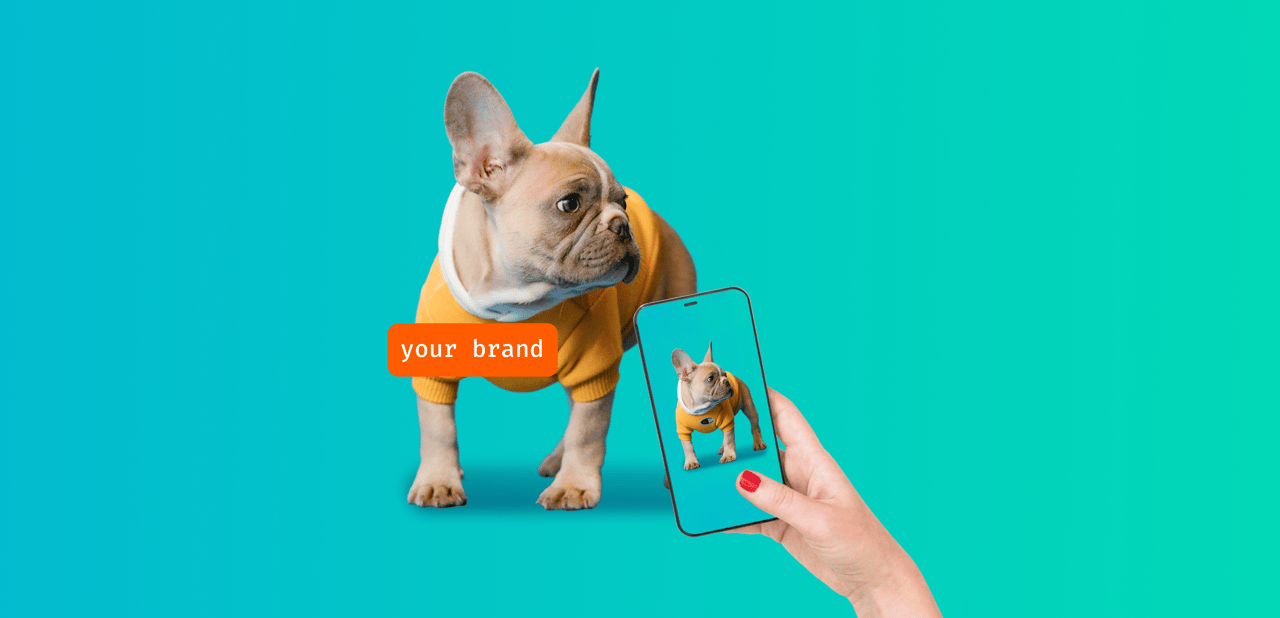
Brand monitoring means keeping track of what people are saying about your brand online—across social media posts, forums, reviews, direct customer feedback, and more. But it’s not just about mentions; it’s about understanding sentiment, spotting trends, and acting fast when something goes wrong. AI-powered tools make this process smarter by analyzing images, emotions, and emerging patterns in real-time.
To show how this works in practice, we’ll follow a fashion brand that faces public backlash over its sustainability claims. The way it responds, depending on whether it’s monitoring or not, shows exactly why brand monitoring matters more than ever.
What is brand monitoring?
Brand monitoring means tracking everything said about your brand online—public posts, private discussions (where accessible), visuals, and even the tone behind the words. It’s not just about seeing your name pop up—it’s about staying aware of how your brand is evolving in public perception.
Here’s what it typically includes:
Mentions across platforms: From tweets and TikTok to Reddit threads and blog posts.
Sentiment tracking: Understanding whether people are praising, criticizing, or questioning your brand.
Visual content analysis: Catching brand logos, products, or packaging in user-generated photos and videos.
Emerging trend alerts: Spotting topics or concerns before they go viral.
-1744285535.png)
-1744285535.png)
Image source: Instagram
For the fashion brand from our example, things started to unravel on TikTok—but the conversation didn’t stop there. As the video gained traction, users brought the topic to Twitter threads, Instagram comments, Reddit forums, and LinkedIn posts from sustainability advocates. News outlets and bloggers chimed in, adding fuel to the fire. Had the brand been actively monitoring across channels, it would’ve spotted the issue sooner, before it became a trending controversy.
Key benefits of brand monitoring
Investing in brand monitoring is rewarding beyond just the ability to track brand mentions across social media platforms. It's the beginning of creating a healthy relationship with your audience.
Brand monitoring efforts are essential for maintaining a strong brand's online presence, which contributes to steady revenue growth. Read on for practical examples of why and when brand monitoring is important.
1. Protecting your brand’s reputation
Reputation isn’t built once—it’s shaped every day by what people say online. When the sustainability claims of our fashion brand were called into question, brand and social media monitoring could have flagged the first signs of doubt while the conversation was still small.
-1744285622.png)
-1744285622.png)
Source: Dailymail
Spotting that early would’ve given the team a chance to clarify facts, issue a response, or even course-correct before headlines and hashtags took over.
2. Identifying crises before they escalate
Not every negative comment is a crisis, but some are a warning. With the right monitoring setup, the brand could have received an alert when sentiment suddenly shifted.
-1744285684.png)
-1744285684.png)
Source: Instagram
This kind of real-time insight is what turns a potential PR disaster into a manageable situation. It’s the difference between responding while people are still asking questions and reacting after they’ve already made up their minds.
3. Staying ahead of competitors
While the controversy unfolded, competitors stayed silent—but observant. Some quickly adjusted their messaging to emphasize transparency and ethics, subtly positioning themselves as more trustworthy.
-1744285751.png)
-1744285751.png)
Source: Instagram
Monitoring your competitors’ mentions and how audiences respond to them helps you identify gaps, improve your own positioning, and even predict the next trend before it hits.
4. Turning feedback into product improvement
In the middle of the backlash, there were also useful suggestions buried in the noise—calls for more transparency, clearer labeling, and third-party certifications. With brand monitoring, this kind of feedback doesn’t get lost. It becomes input for your product roadmap and marketing strategy, helping you build a brand that listens and evolves.
5. Finding your most loyal advocates
Not everyone joined the pile-on. Some loyal customers defended the brand, shared positive experiences, and asked others to wait for a response. This momentum contributed to maintaining steady brand health.
-1744285807.png)
-1744285807.png)
Brand monitoring helps identify these advocates in real-time, so you can amplify their voices, thank them publicly, or even build long-term partnerships. In a moment of crisis, they can be your most valuable allies.
How brand monitoring works
At its core, brand monitoring involves three key actions: tracking mentions, analyzing sentiment, and pulling insights from massive volumes of online content.
Manual tracking—scanning social platforms, reading reviews, or setting up basic alerts—only scratches the surface. It’s time-consuming, inconsistent, and easy to miss the context behind a conversation.
AI-powered brand monitoring tools like YouScan take this further. They don’t just collect mentions—they analyze the emotional tone, identify patterns over time, and even recognize brand logos in images.
-1744285868.png)
-1744285868.png)
Source: Thecooldown.com
In the case of our fashion brand, people were sharing photos of clothing tags alongside critical captions, without tagging the brand at all. Basic monitoring would have missed it. YouScan’s visual recognition feature, on the other hand, would have caught those posts in real-time.
YouScan also uses aspect-based sentiment analysis, which breaks down how people feel about specific elements—like product quality, pricing, or sustainability claims—allowing you to see exactly what’s driving public opinion. This is how monitoring transforms from a passive data feed into an active decision-making tool.


Where to track brand mentions online
For brand monitoring to be effective, it has to cover more than just the obvious platforms. Here’s where brands need to pay attention:
Social media posts: Twitter, Instagram, Facebook, TikTok, YouTube, and LinkedIn are key spaces where conversations start and spread fast. This is where our fashion brand first saw the controversy unfold—on TikTok—then watched it ripple into social media channels and other networks.
Online forums and communities: Reddit threads, Discord servers, and niche fashion forums often host deeper, unfiltered discussions. These spaces provide raw, honest feedback that rarely makes it to mainstream social media, but tells you a lot about brand sentiment.
News sites and blogs: Once a story gains traction, journalists and bloggers amplify it. Monitoring these sources helps brands anticipate how a story is evolving and prepare responses in context.
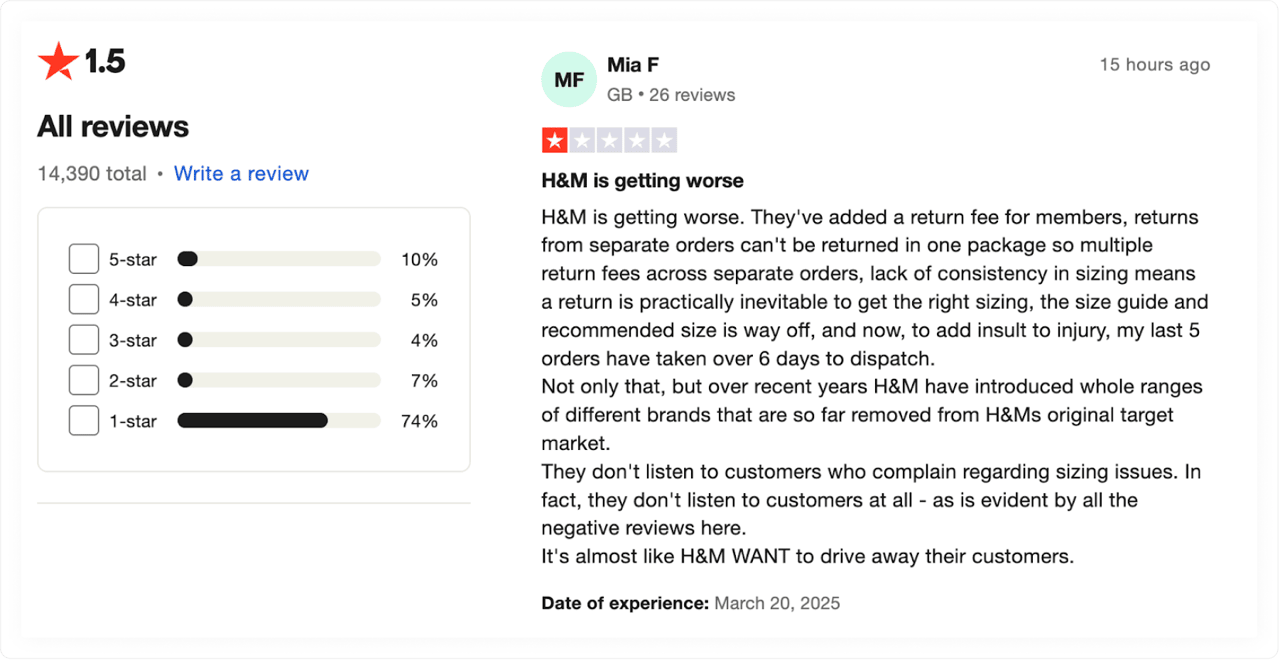

Source: Trustpilot
Review platforms: From Trustpilot to Google Reviews, these are hotspots for sentiment, especially when a crisis impacts customer experience. They can reveal shifting public perception even before it surfaces on social media.
User-generated content: People don’t always tag brands. They post pictures wearing your clothes, mention your name casually in a caption, or include you in a roundup video. Tools like YouScan can scan images and detect brand logos or products, even if the name isn’t mentioned in text.
Modern brand monitoring tools cover mostly social media, but paired with Google alerts, you can capture brand sentiment across multiple channels and never miss a word.
How to use brand monitoring for crisis management
In a crisis, timing is everything. Brand monitoring is also about knowing when to step in. The earlier you detect a shift in public sentiment, the more control you have over the outcome.
When our fashion brand’s sustainability claims were questioned, a delay in response made things worse. What started as a few skeptical comments turned into a trending topic across social media and news outlets. Had the brand been using a tool like YouScan, it would’ve received instant insights and real-time alerts as soon as negative sentiment began to spike.
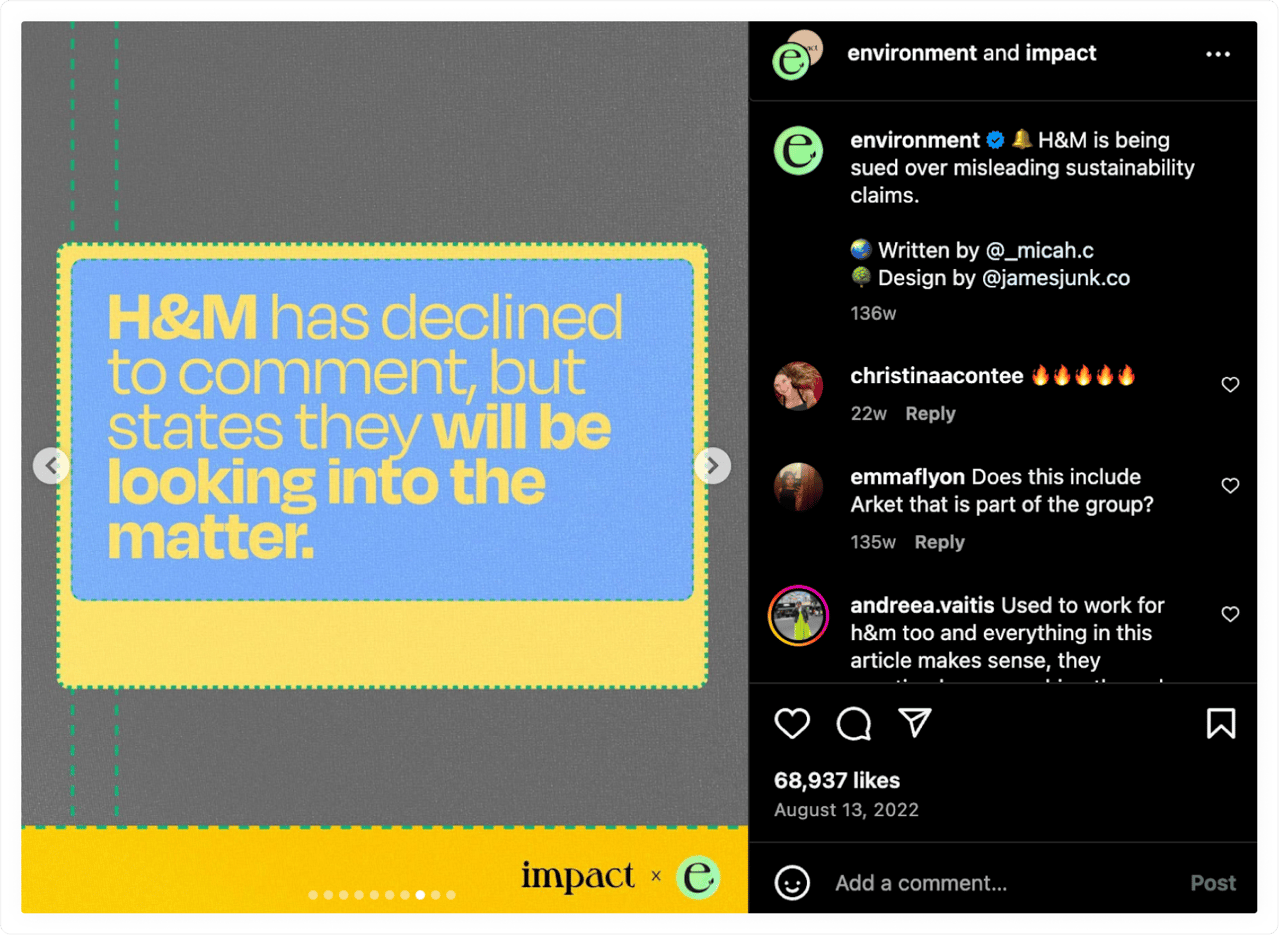

Source: Instagram
YouScan’s platform doesn’t just notify you when your brand is mentioned—it flags unusual activity, such as a sudden surge in mentions or a sharp shift toward negative sentiment. It also helps you understand what’s fueling the change, so you can craft a relevant and timely response.
Let’s flip the script: If the brand had been monitoring properly, the team could have spotted the trend early, acknowledged concerns, and issued a transparent statement within hours. Instead of scrambling to catch up, they could have led the conversation, reassured their customers, and turned a potential scandal into a moment of brand accountability.
Crisis management is not about damage control—it’s about staying informed enough to act before damage happens. Brand monitoring is your early warning system.
Using brand monitoring insights to improve marketing strategies
Brand monitoring is one of the most valuable tools for shaping marketing strategies and marketing campaigns that actually resonate. When done right, the same social media monitoring data that helps you manage your reputation can also help you grow.
Spot what truly matters to your audience
By tracking sentiment across specific topics—like pricing, sustainability, or customer experience—you can identify which themes your audience cares about most. In our fashion brand’s case, criticism focused on vague sustainability claims. That insight could fuel a more transparent campaign, highlighting certified materials, local production, or behind-the-scenes processes to rebuild trust.
Try this: Monitor recurring keywords in user posts and reviews to find out what language your audience uses and cares about most, then reflect it in your next campaign.
Refine your messaging in real time
You don’t have to wait for a campaign to end to see if it’s working. With tools like YouScan, you can track social media coverage, see live reactions, and tweak your messaging mid-way. If the sentiment around a new collection starts off mixed, the right brand monitoring strategy helps you understand what’s missing—maybe the price point isn’t justified, or the message feels off-brand.
Try this: Launch a product or campaign with sentiment alerts enabled. If feedback trends negatively, adjust your content, captions, or influencer messaging before rolling it out further.
Discover unexpected brand ambassadors
Sometimes, your most effective marketers are the ones you didn’t expect. Monitoring social media content helps you find people organically promoting your brand—stylists, content creators, or even everyday customers with small but loyal followings. During the controversy, our fashion brand saw a few creators defending their ethical production—these are the voices worth amplifying.
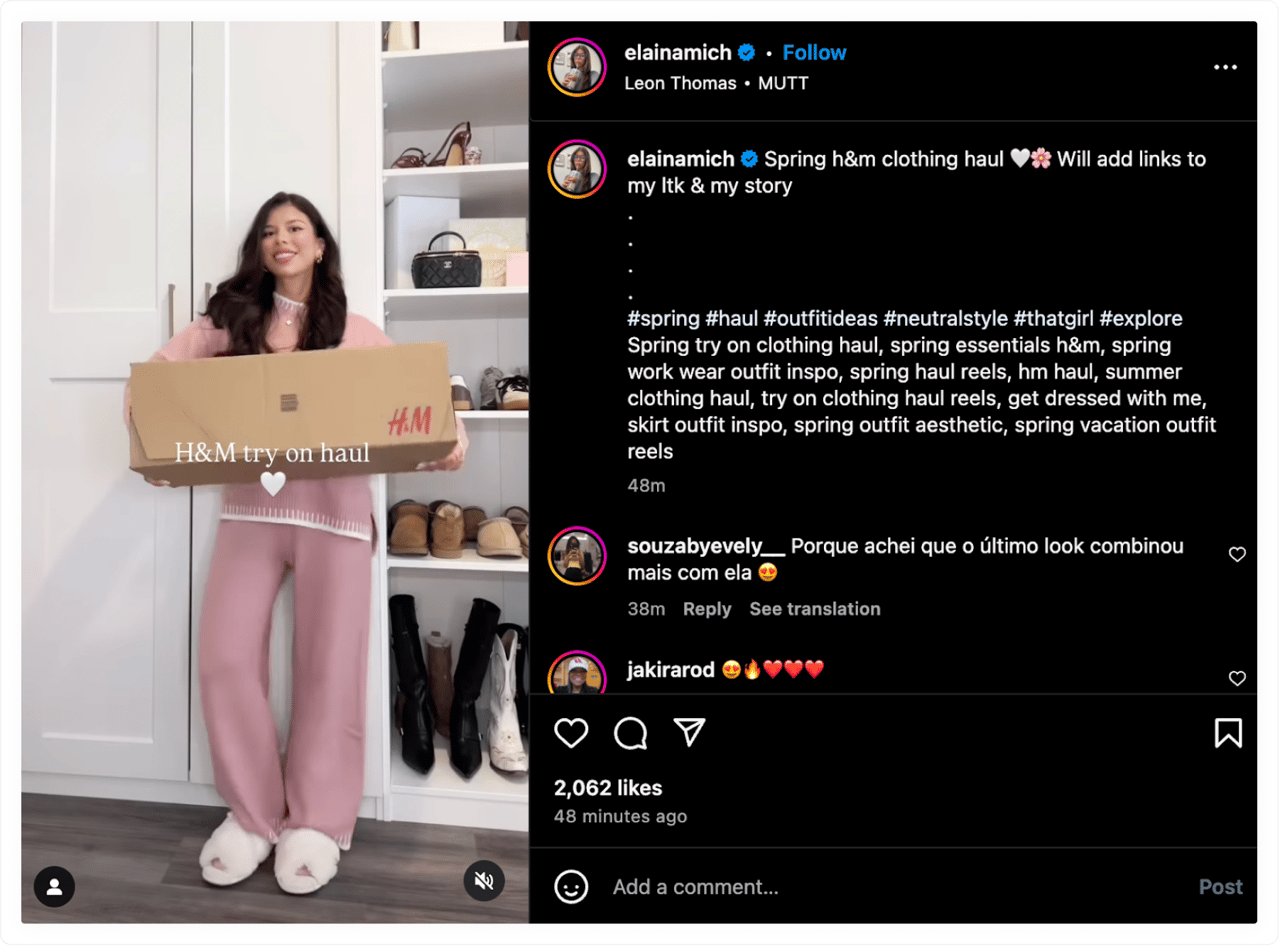

Source: Instagram
Try this: Use social media monitoring to filter positive mentions with high engagement. Reach out for partnerships, UGC campaigns, or testimonials.
Keep tabs on competitor strategies
YouScan lets you track not only your own brand but your competitors, too. If another fashion brand is getting buzz for its transparency campaign or new recycling program, you’ll know. You can analyze what’s working for them, what’s being criticized, and what gaps exist in the conversation that your brand can fill.
Try this: Set up competitor dashboards to monitor how audiences react to their campaigns. Look for white space where your brand can stand out—then own it.
Validate creative decisions with real data
Instead of guessing whether a message will land, use past monitoring data to inform your tone, style, and content. If posts featuring behind-the-scenes production perform best during calm periods, they may be your most effective trust-building asset in tense ones.
Try this: Look back at past spikes from positive sentiment analysis and identify the content themes that drove them. Use those insights as your creative brief.
The future of brand monitoring: trends to watch
Brand monitoring is evolving fast. What used to be a basic alert system is now a real-time intelligence engine, driven by AI and constantly getting smarter. Here's what you need to watch for next:
Predictive analytics for early warning
AI is no longer just reacting—it’s predicting. Online brand monitoring tools are starting to identify patterns that hint at potential crises, giving you more lead time to prepare a response. If the fashion brand had been using predictive signals from analytics on social media platforms, it could’ve seen the early rise in skeptical posts weeks before the controversy exploded.
Visual listening will become non-negotiable
More and more conversations are happening through visuals, not words. Users post outfit photos, unboxing videos, and hauls—but don’t always mention the brand name. Visual listening, a space within social listening, YouScan leads in, helps you spot logos, products, or even color patterns across millions of images and videos. For fashion brands, this means tracking how collections are worn, styled, and perceived, without needing a tag or brand mentions.
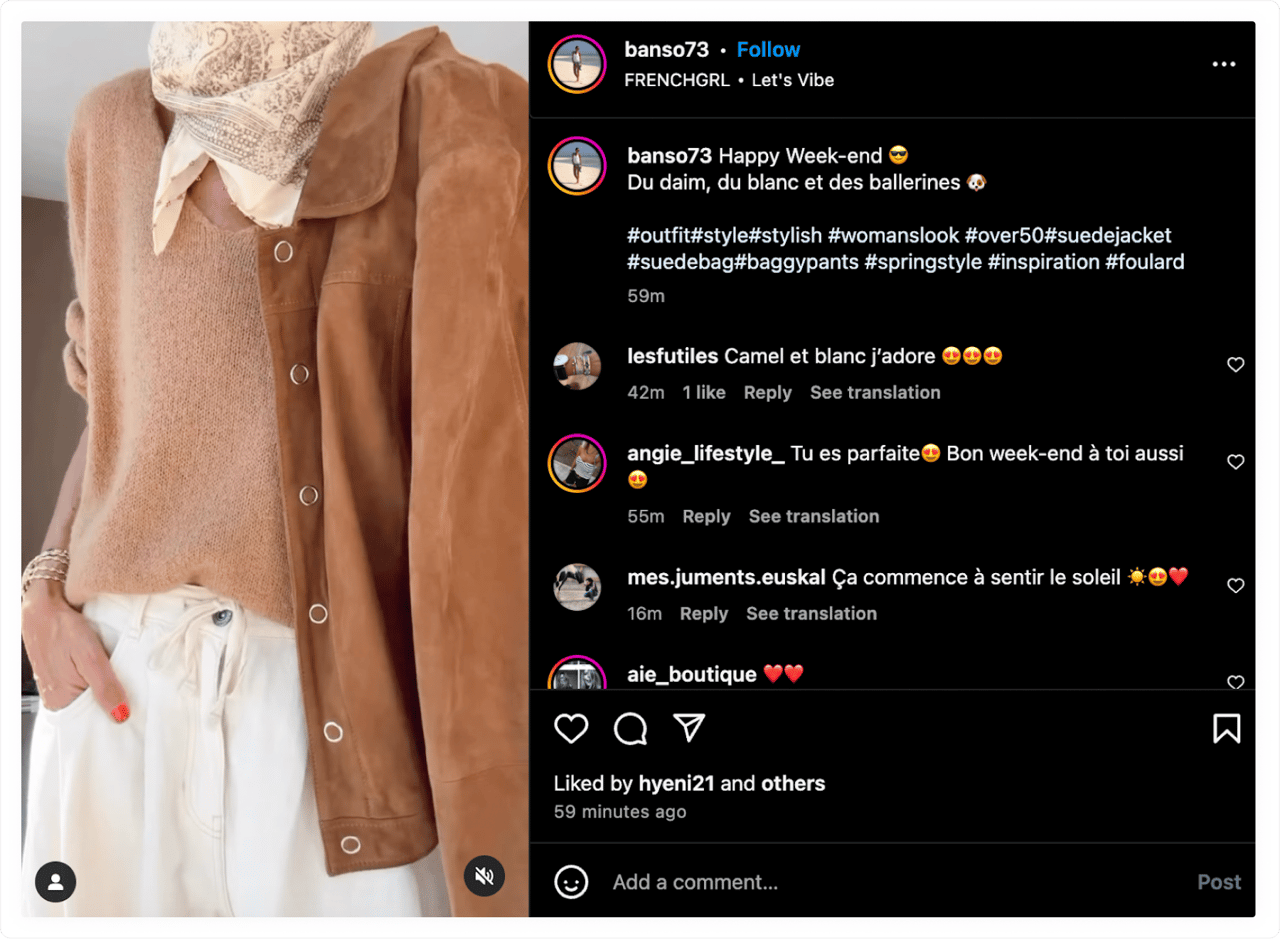

Source: Instagram
Real-time reputation scoring
Soon, brands may have dynamic reputation scores that update as public sentiment shifts. This score could influence everything from customer trust to investor interest. For marketing and PR teams, it becomes a live dashboard for brand health, helping them know when to push forward or pause.
Deepfake detection and content authenticity
As manipulated content gets more sophisticated, so does the need to spot fakes before they do damage. Deepfake videos, AI-generated images, or falsely attributed quotes can spark misinformation at scale. Advanced monitoring tools are starting to detect these threats early, essential for protecting brand credibility.
Smarter segmentation and personalization
Expect monitoring tools to offer deeper audience breakdowns, not just by demographics but by brand sentiment, tone, interests, and values. This will help you tailor responses and campaigns to specific segments, especially during high-stakes situations where one message won’t fit all.
For our fashion brand, staying ahead of these trends means being able to spot trouble before it starts and understand how real customers are reacting in the moment.
Conclusion
Brand monitoring is a must. As our fashion brand example showed, reputations can shift quickly, and what starts as a single post can snowball into a full-blown crisis. But it doesn’t have to. With the right tools in place, brands can spot early warning signs, understand what their audience is really saying, and act with confidence instead of scrambling to catch up.
It’s not just about tracking brand mentions—it’s about unlocking insights that drive smarter decisions. From refining your messaging to identifying new advocates and staying ahead of competitors, brand monitoring helps you stay connected to the people who matter most.
Tools like YouScan bring all of this together. With AI-powered sentiment analysis, visual recognition, and real-time alerts, we give you a full picture of your brand’s reputation across every platform, in every format, the moment it happens.
Don’t wait for the backlash to trend. Stay ahead of the conversation. Start monitoring with YouScan today.
FAQs
What is brand monitoring?
Brand monitoring is the practice of tracking what people say about your brand across social media, news sites, forums, and more. It involves analyzing sentiment, identifying trends, and gaining insights to protect your reputation and guide marketing decisions.
What are the “5 C’s” of branding in the context of monitoring?
In a monitoring context, the 5 C’s could be reimagined as:
Conversation – What people are saying about you
Context – Where and why it’s being said
Consistency – How aligned your brand response is across platforms
Credibility – How trustworthy your brand appears under public scrutiny
Community – Who’s engaging with or standing up for your brand
What are the 4 pillars of brand management when it comes to online reputation?
From a monitoring perspective, they include:
Awareness – Knowing when and where your brand is mentioned
Perception – Understanding public sentiment in real-time
Engagement – Responding to feedback, both positive and negative
Adaptation – Using insights to evolve messaging, products, and strategy
What are the 3 C’s of brand positioning, and how does monitoring support them?
The classic 3 C’s—Clarity, Consistency, and Competitiveness—are all strengthened by brand monitoring:
Clarity: Learn how your messaging is being interpreted
Consistency: Ensure your brand voice is steady across platforms
Competitiveness: Benchmark yourself against rivals by tracking their mentions and public perception
What’s the difference between social listening and brand monitoring?
Social listening focuses on tracking keywords, hashtags, and trends. Brand monitoring goes further by analyzing how people feel about your brand specifically, across both text and visuals, and how that sentiment changes over time.
How often should I monitor my brand online?
Continuously. With AI-powered tools like YouScan, you can set up real-time alerts and dashboards so that your team stays updated around the clock, especially during product launches or potential PR risks.


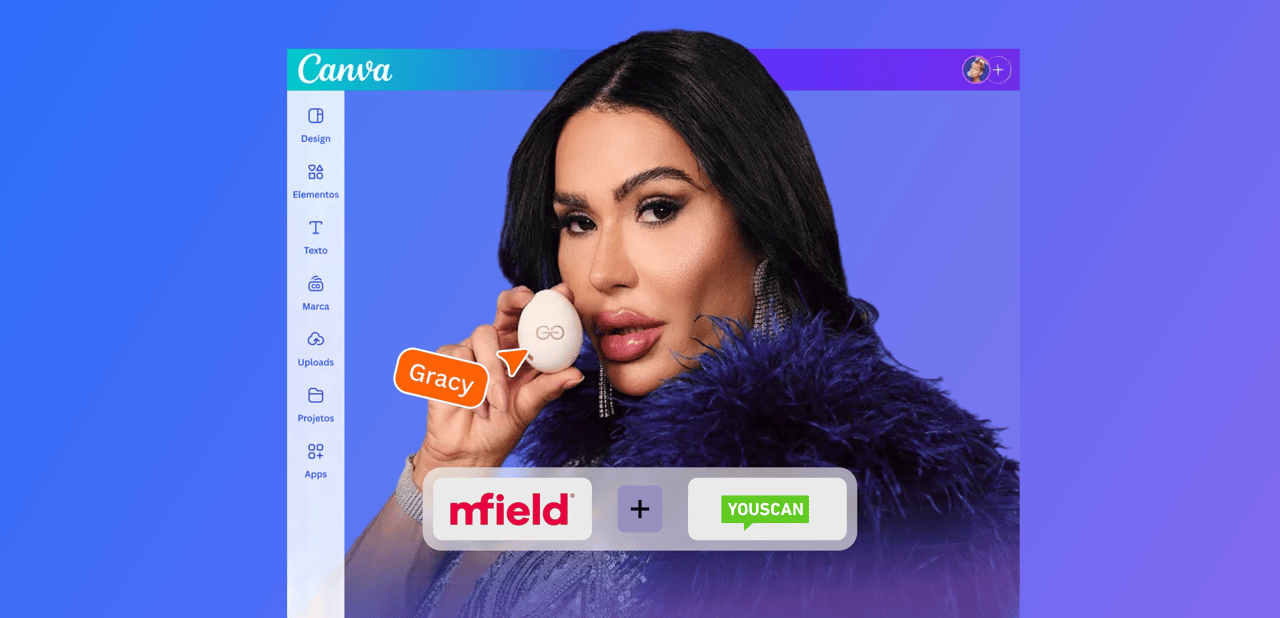
.png)